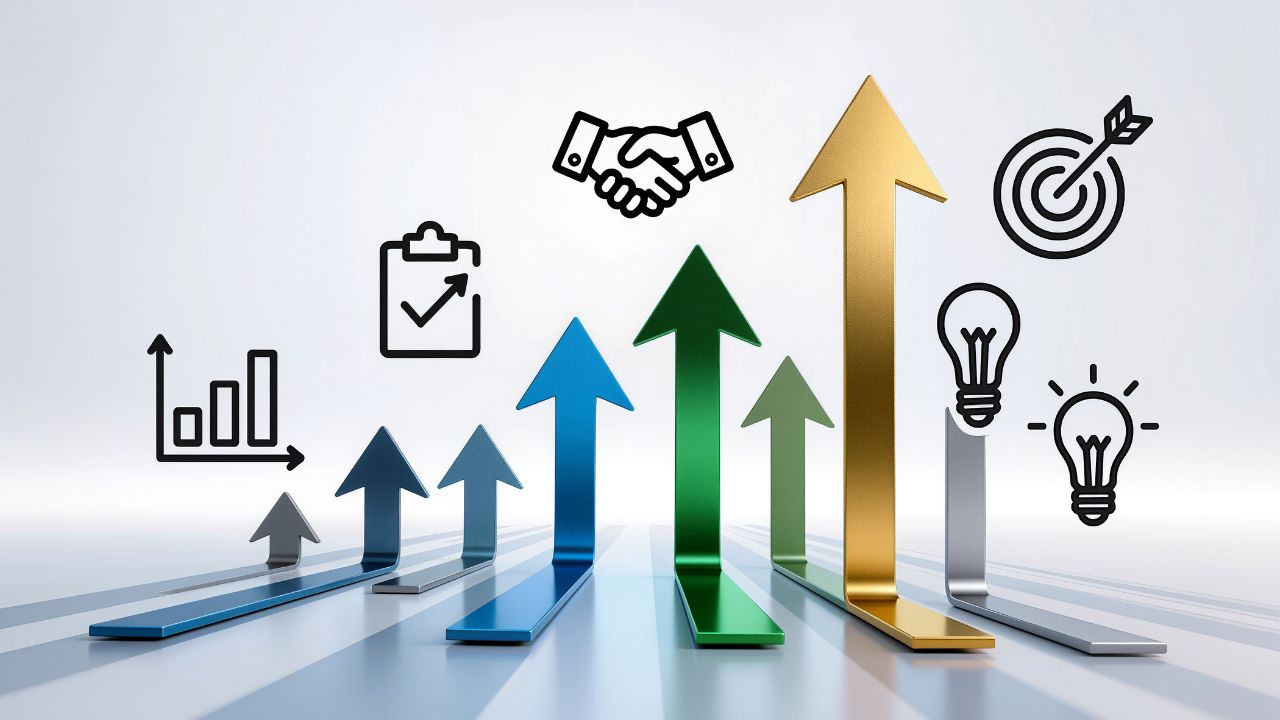Introduction:
In a world overwhelmed by data, the ability to make sense of complex numbers quickly has never been more valuable. Every industry today relies on data to make decisions — but not everyone knows how to interpret it, let alone explain it to others. That’s where data visualization comes in. It transforms raw data into visual formats like graphs, charts, and dashboards that are instantly understandable. And those who master this skill gain a significant edge in communication, strategy, and problem solving.
Understanding data visualization is more than a technical ability. It is a form of visual storytelling — a way to reveal insights, persuade audiences, and uncover opportunities that might otherwise go unnoticed. In today’s business and digital landscape, being fluent in the visual language of data is a superpower that empowers professionals across roles and industries to lead with clarity and confidence.
Visualizations turn abstract data into actionable insights:
Most people are not equipped to digest rows and columns of numbers, especially when time is short and decisions are urgent. Data visualizations help by condensing information into forms that highlight what matters most — trends, outliers, and comparisons. With one well-designed chart, you can understand the trajectory of a business or the behavior of a customer segment in seconds.
This power lies in simplicity. A heatmap can instantly identify performance highs and lows, while a line chart can reveal growth over time without the need to interpret raw figures. These visual cues reduce the cognitive load required to process data, enabling professionals to focus on what to do next, not just what the numbers say.
In a medical setting where data visualization is critical and direclty impacts patient care, tools like laboratory information systems allow professionals to quickly understand diagnoses and take action.
Data visualization builds stronger arguments and sharper presentations:
Whether pitching an idea to leadership, reporting to stakeholders, or making a case to a client, a compelling visual can be far more convincing than a spreadsheet. Strong data visuals don’t just support your point — they make your point. They give weight to your recommendations and allow others to understand your reasoning at a glance.
A scatter plot that shows customer churn dropping after a product update carries far more impact than listing churn rates by month. And a well-designed bar graph showing year-over-year growth is hard to argue with. Mastering data visualization means mastering the art of influence — and doing it with clarity and authority.
Visualization supports faster and more informed decisions across teams:
In high-pressure environments, decisions often need to be made quickly. Having data visualizations on hand means teams don’t have to wait for reports to be analyzed — they can interact with live dashboards, scan visual summaries, and identify key issues or successes in real time. This speeds up processes and improves accuracy.
Even more important, it empowers more people across the organization to participate in decision-making. When data is visualized clearly, it breaks down silos between technical teams and business users. Everyone can contribute ideas based on the same shared understanding of the facts, which leads to more inclusive and informed collaboration.
AI tools are enhancing how visualizations are built and used:
Creating powerful data visualizations used to be time-consuming and often required a blend of design and technical expertise. Now, artificial intelligence is automating much of that process. With AI, users can generate visuals quickly, often just by asking questions in plain language or uploading a dataset.
Tools powered by AI for data analysis can instantly suggest the best way to represent data visually — choosing between a pie chart, bar graph, or map based on what’s being analyzed. These systems can also highlight trends or outliers, making the analysis not just faster but more insightful. For professionals in non-technical roles, this makes visualization far more accessible and effective.
AI-driven visualization benefits include:
- Faster creation of accurate visuals from raw data
- Automatic detection of key trends, changes, or anomalies
- Personalized dashboards tailored to different roles
- Natural language prompts to build visuals without coding
Visual fluency helps bridge the gap between data experts and business teams:
Data professionals and business decision-makers often speak different languages. Analysts may understand regression models and standard deviations, while business leads care more about ROI and strategy. Visualization creates a common ground. When data is presented visually, it becomes easier for all parties to engage with the content and work toward shared goals.
This alignment helps organizations run more smoothly. Teams communicate more clearly, strategies align more closely with real data, and fewer opportunities are missed due to misinterpretation or delay. Becoming fluent in visual thinking means becoming a better collaborator, regardless of your department or role.
Interactive dashboards make exploration and discovery more intuitive:
Static charts are useful, but interactive dashboards take data visualization to another level. These tools allow users to manipulate data directly — filter by region, adjust timeframes, compare different variables. This kind of self-guided exploration turns users from passive viewers into active investigators.
With dashboards, non-technical users can answer their own questions without submitting requests to data teams. They can dig deeper into trends, test hypotheses, and find insights that matter to them. This democratization of data leads to more curiosity, faster innovation, and better decision-making at every level of the business.
Visual learners gain more value and retain information better through charts and graphs:
Not everyone processes information the same way. Some people are naturally more responsive to visuals than to words or numbers. For these visual learners — who make up a large portion of the population — charts and graphics are critical tools for understanding and retaining information.
When insights are presented visually, they become not only more accessible but also more memorable. A pattern spotted on a heatmap is likely to stay with someone longer than a figure buried in a spreadsheet. This makes visual communication essential in training, education, and internal knowledge sharing.
Benefits of visual learning in data-focused environments:
- Improves engagement with complex or technical content
- Makes abstract data more relatable and tangible
- Helps teams retain key insights from meetings and reports
- Supports diverse learning styles in team environments
Mastering visualization builds future ready skills in a data driven world:
As data becomes the foundation of every decision, visualization will only grow more important. Companies are increasingly prioritizing data literacy as a core skill — not just for analysts, but for everyone. Understanding how to visualize data is part of that literacy, and those who master it will be better equipped for leadership roles and cross-functional projects.
Learning to think visually also sharpens other key professional skills. It enhances communication, improves strategic thinking, and increases empathy by helping you understand how others interpret information. In short, visual thinking is a future-ready mindset that turns information into influence.
Conclusion:
Data visualization is no longer a specialized tool for analysts — it is a universal superpower that amplifies understanding, drives faster decisions, and connects teams through shared insights. In today’s data-saturated world, those who can see the story within the numbers have the power to lead, inspire, and make meaningful change.
By embracing visual thinking and learning how to craft compelling data visuals, professionals across industries can unlock deeper insights and create greater impact in their roles. The future belongs to those who not only understand the data — but know how to make others see it clearly too.
Understanding data visualization is more than a technical ability. It is a form of visual storytelling — a way to reveal insights, persuade audiences, and uncover opportunities that might otherwise go unnoticed. In today’s business and digital landscape, being fluent in the visual language of data is a superpower that empowers professionals across roles and industries to lead with clarity and confidence.
Visualizations turn abstract data into actionable insights:
Most people are not equipped to digest rows and columns of numbers, especially when time is short and decisions are urgent. Data visualizations help by condensing information into forms that highlight what matters most — trends, outliers, and comparisons. With one well-designed chart, you can understand the trajectory of a business or the behavior of a customer segment in seconds.
This power lies in simplicity. A heatmap can instantly identify performance highs and lows, while a line chart can reveal growth over time without the need to interpret raw figures. These visual cues reduce the cognitive load required to process data, enabling professionals to focus on what to do next, not just what the numbers say.
Data visualization builds stronger arguments and sharper presentations:
Whether pitching an idea to leadership, reporting to stakeholders, or making a case to a client, a compelling visual can be far more convincing than a spreadsheet. Strong data visuals don’t just support your point — they make your point. They give weight to your recommendations and allow others to understand your reasoning at a glance.
A scatter plot that shows customer churn dropping after a product update carries far more impact than listing churn rates by month. And a well-designed bar graph showing year-over-year growth is hard to argue with. Mastering data visualization means mastering the art of influence — and doing it with clarity and authority.
Visualization supports faster and more informed decisions across teams:
In high-pressure environments, decisions often need to be made quickly. Having data visualizations on hand means teams don’t have to wait for reports to be analyzed — they can interact with live dashboards, scan visual summaries, and identify key issues or successes in real time. This speeds up processes and improves accuracy.
Even more important, it empowers more people across the organization to participate in decision-making. When data is visualized clearly, it breaks down silos between technical teams and business users. Everyone can contribute ideas based on the same shared understanding of the facts, which leads to more inclusive and informed collaboration.
AI tools are enhancing how visualizations are built and used:
Creating powerful data visualizations used to be time-consuming and often required a blend of design and technical expertise. Now, artificial intelligence is automating much of that process. With AI, users can generate visuals quickly, often just by asking questions in plain language or uploading a dataset.
Tools powered by AI for data analysis can instantly suggest the best way to represent data visually — choosing between a pie chart, bar graph, or map based on what’s being analyzed. These systems can also highlight trends or outliers, making the analysis not just faster but more insightful. For professionals in non-technical roles, this makes visualization far more accessible and effective.
AI-driven visualization benefits include:
- Faster creation of accurate visuals from raw data
- Automatic detection of key trends, changes, or anomalies
- Personalized dashboards tailored to different roles
- Natural language prompts to build visuals without coding
Visual fluency helps bridge the gap between data experts and business teams:
Data professionals and business decision-makers often speak different languages. Analysts may understand regression models and standard deviations, while business leads care more about ROI and strategy. Visualization creates a common ground. When data is presented visually, it becomes easier for all parties to engage with the content and work toward shared goals.
This alignment helps organizations run more smoothly. Teams communicate more clearly, strategies align more closely with real data, and fewer opportunities are missed due to misinterpretation or delay. Becoming fluent in visual thinking means becoming a better collaborator, regardless of your department or role.
Interactive dashboards make exploration and discovery more intuitive:
Static charts are useful, but interactive dashboards take data visualization to another level. These tools allow users to manipulate data directly — filter by region, adjust timeframes, compare different variables. This kind of self-guided exploration turns users from passive viewers into active investigators.
With dashboards, non-technical users can answer their own questions without submitting requests to data teams. They can dig deeper into trends, test hypotheses, and find insights that matter to them. This democratization of data leads to more curiosity, faster innovation, and better decision-making at every level of the business.
Visual learners gain more value and retain information better through charts and graphs:
Not everyone processes information the same way. Some people are naturally more responsive to visuals than to words or numbers. For these visual learners — who make up a large portion of the population — charts and graphics are critical tools for understanding and retaining information.
When insights are presented visually, they become not only more accessible but also more memorable. A pattern spotted on a heatmap is likely to stay with someone longer than a figure buried in a spreadsheet. This makes visual communication essential in training, education, and internal knowledge sharing.
Benefits of visual learning in data-focused environments:
- Improves engagement with complex or technical content
- Makes abstract data more relatable and tangible
- Helps teams retain key insights from meetings and reports
- Supports diverse learning styles in team environments
Mastering visualization builds future ready skills in a data driven world:
As data becomes the foundation of every decision, visualization will only grow more important. Companies are increasingly prioritizing data literacy as a core skill — not just for analysts, but for everyone. Understanding how to visualize data is part of that literacy, and those who master it will be better equipped for leadership roles and cross-functional projects.
Learning to think visually also sharpens other key professional skills. It enhances communication, improves strategic thinking, and increases empathy by helping you understand how others interpret information. In short, visual thinking is a future-ready mindset that turns information into influence.
Conclusion:
Data visualization is no longer a specialized tool for analysts — it is a universal superpower that amplifies understanding, drives faster decisions, and connects teams through shared insights. In today’s data-saturated world, those who can see the story within the numbers have the power to lead, inspire, and make meaningful change.
By embracing visual thinking and learning how to craft compelling data visuals, professionals across industries can unlock deeper insights and create greater impact in their roles. The future belongs to those who not only understand the data — but know how to make others see it clearly too.









